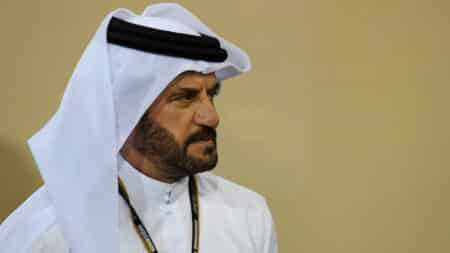
Prost laments Renault’s ‘sad’ F1 exit: ‘It’ll be difficult to come back’
Alain Prost has given his view on Renault exiting F1 as an engine manufacturer
Kimi Räikkönen completed 58 laps of Albert Park on Sunday, but the following morning I opted for just one – a gentle stroll around a sporting peculiarity, a racetrack that doubles as a wildlife reserve. It’s conceivable that Kimi is still in a bar somewhere, but most drivers are by now either in – or en route to – Kuala Lumpur, to acclimatise to the humidity. The circuit, though, has not fallen wholly silent as it awaits recapture by nature.
It will be a while before parkland roads reopen to everyday traffic, Retaining walls have to be shifted, grandstands dismantled and temporary installations stored. Cables stretching for about 120 kilometres – more than one third of a Grand Prix distance – have to be unravelled and packed, ready for transport to China. It’s too big a job to done on a race-by-race basis, so separate teams operate alternately. It’s a physical slog for those entrusted with the task, so it seemed churlish to point out that even that level of wiring hadn’t been enough to make race control’s telemetry reliable…
The weekend will be remembered for intermittent chaos and Räikkönen’s victory, the Finn making flawless use of a Lotus chassis that was perfectly tuned to the conditions. The Red Bull RB9 is a rocket, though, and it is likely to be a matter of moments before the team strikes a suitable compromise between performance and tyre preservation. The Mercedes W04 looked very good for a couple of days, then rather ordinary once it was fitted with medium tyres for race stints. Ferrari has started with the dual advantages of Fernando Alonso and a competitive car, rather than the Spaniard and a couple of crossed fingers, and McLaren – which had the quickest race package at the end of 2012 – acknowledges that it now has anything but… and isn’t quite sure why.
Force India has persistently made a fuss about the wisdom of its decision to re-sign Adrian Sutil, rather than hiring Jules Bianchi, and – assisted by favourable tyre tactics – the German caused a stir by leading for 11 laps. It was a decent cameo, but I’d counter that Bianchi’s was better still. The Frenchman performed beautifully all weekend for Marussia and finished a lap clear of the other ‘new’ cars – an unsung jewel of a drive that suggests he’ll flourish in the no-nonsense, pressure-free environment he’s inherited.
Given Sutil’s performance, you also have to wonder what Nico Hülkenberg might have achieved: he was due to start one place ahead of his compatriot and could have embraced the same advantageous strategy, had he not been sidelined by fuel-system failure. It was Hülkenberg’s third Australian GP and he has yet to complete a racing lap.
The Melburnians don’t just organise one of the season’s busiest F1 events, they do so with panache. The 60th anniversary of racing in Albert Park was a central theme of this year’s meeting and several cars from the 1953 Australian GP were assembled in a display area close to the F1 paddock. On Sunday afternoon, they completed a commemorative parade lap and, appropriately, circulated anti-clockwise, as they did in period.

Alain Prost has given his view on Renault exiting F1 as an engine manufacturer

Mark Hughes weighs up an exceptional 2025 rookie class, dissecting four contrasting debut seasons to reveal who truly stood out the most

Mohammed Ben Sulayem's has now been re-elected as FIA president, after a controversial first term. But how did he become the first non-European president in the FIA's history?

Cadillac is in a race against time to get its new F1 car ready for 2026 – sim driver Pietro Fittipaldi explains how it's running in the virtual world first